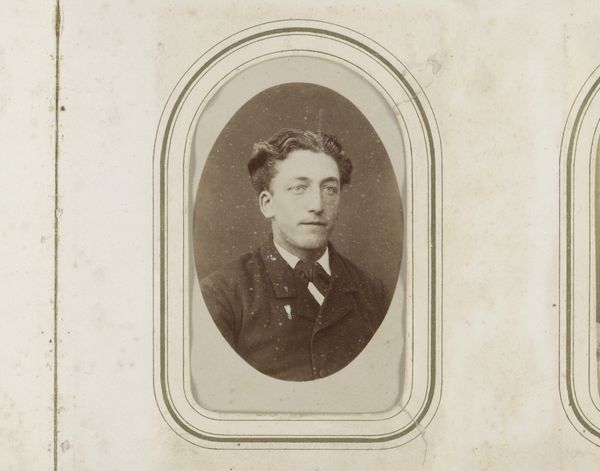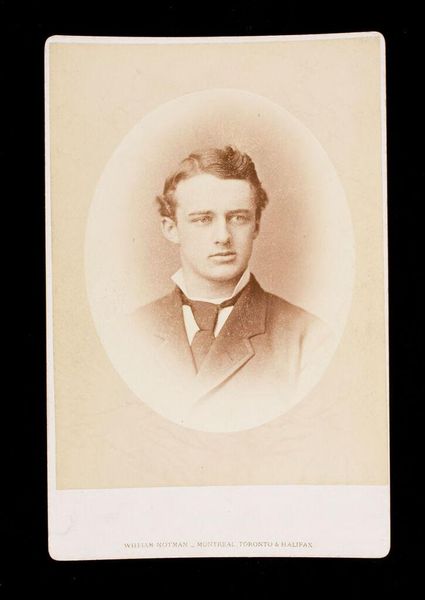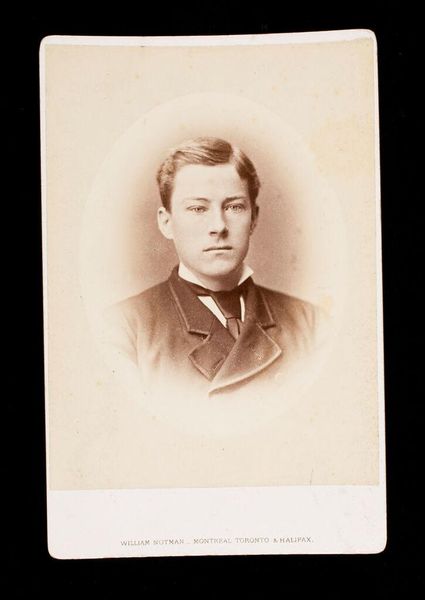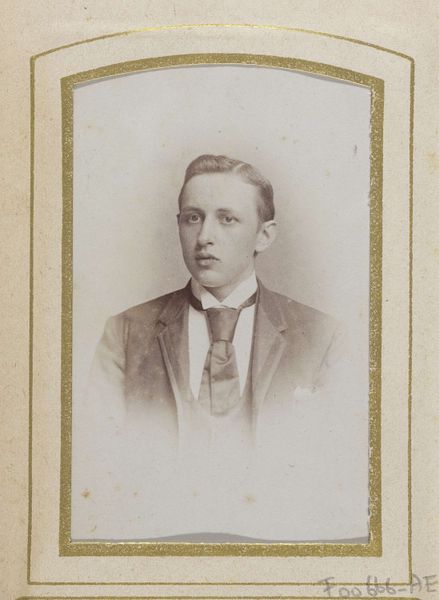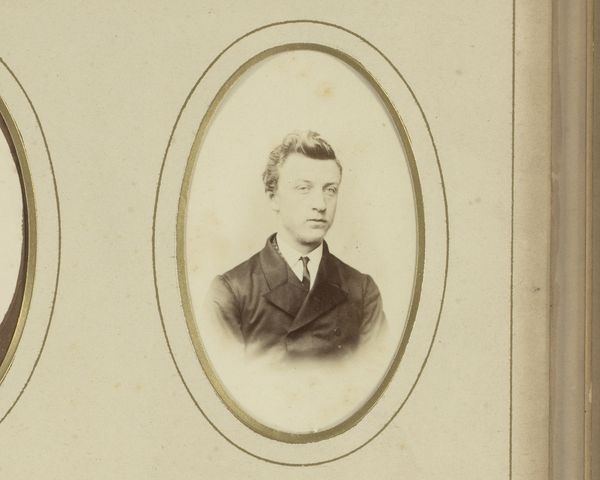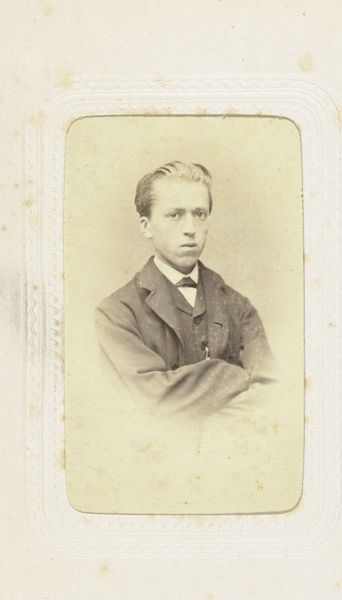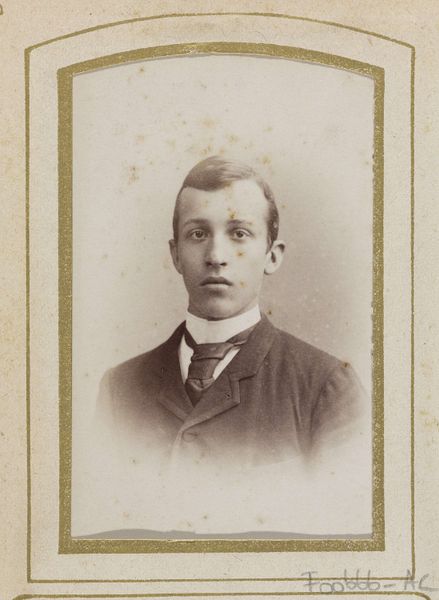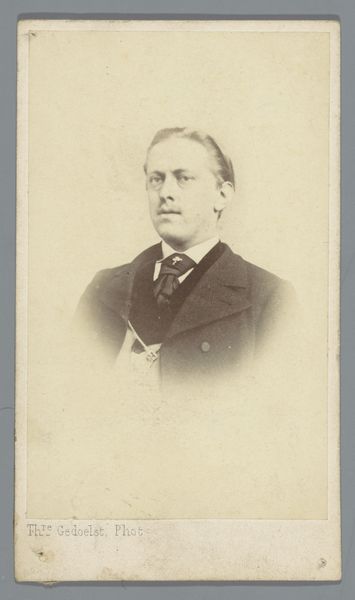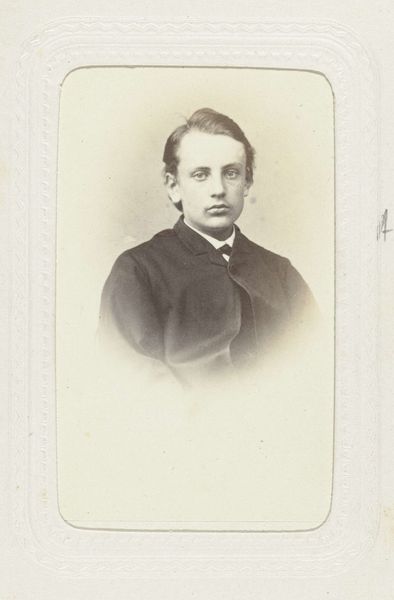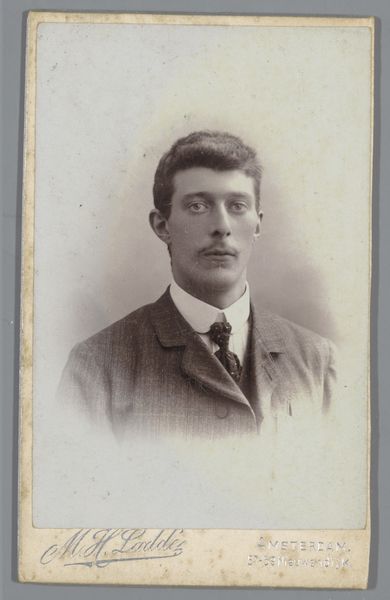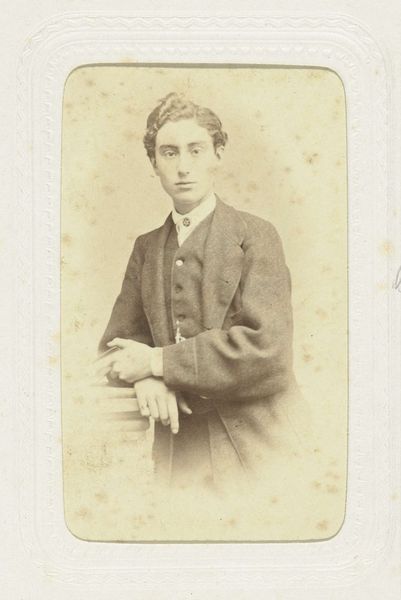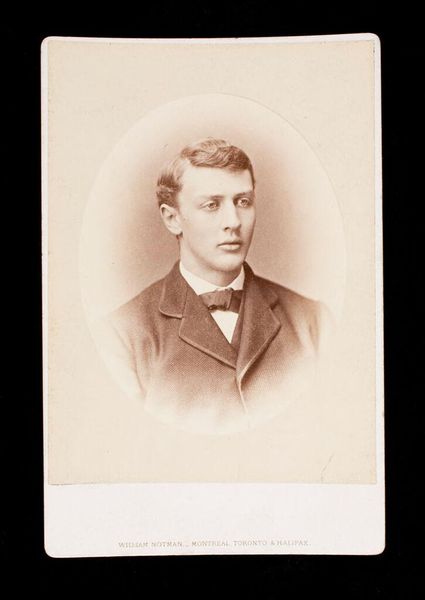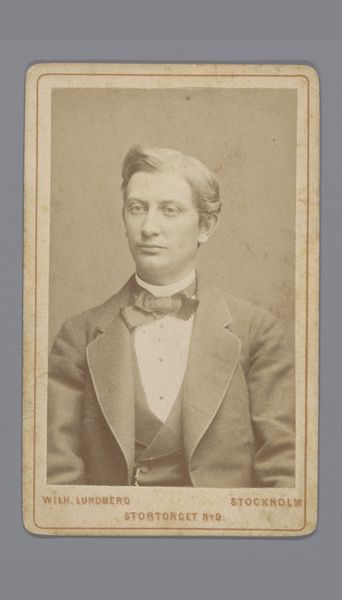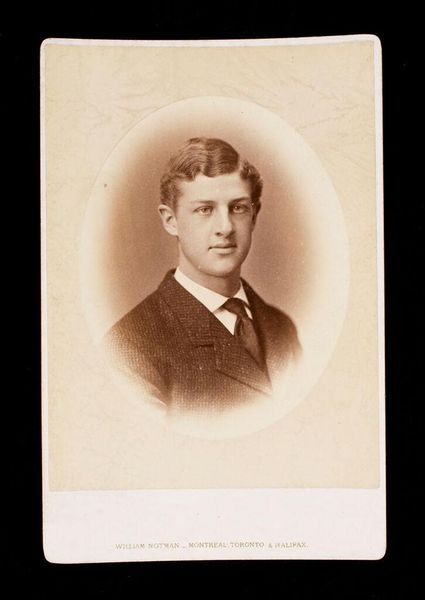
Dimensions: height 80 mm, width 54 mm, height 296 mm, width 225 mm
Copyright: Rijks Museum: Open Domain
Editor: Here we have "Studioportret van een jongeman met een scheiding in zijn haar," which translates to "Studio Portrait of a Young Man with a Part in his Hair," by G. Reussing, dating from around 1863 to 1870. It's a daguerreotype, so a very early photographic process. I find it kind of melancholic. What do you see in this piece? Curator: It's a compelling image, isn't it? Considering the period, it offers a glimpse into the constructed identity of young men in the mid-19th century. The formal attire, the carefully styled hair – it all speaks to a desire to project a certain image of respectability and perhaps even bourgeois aspirations. What’s missing for me are any cues to lived experience that transcend this careful performance of masculinity. How do you think the technology of early photography contributes to or even shapes that sense of melancholic reserve you felt? Editor: That's interesting. The daguerreotype process was so time-consuming, right? So he must have had to sit completely still for a long time. Did that process maybe influence the mood? It would be hard to appear spontaneous or joyful if you're being forced to stay still for an extended time. Curator: Absolutely. The technology imposes constraints. The extended exposure time likely reinforced a kind of rigid self-presentation. But I wonder too about the societal pressures that may have been at play, shaping his posture and gaze, pressures to conform. To me, the image becomes a quiet comment on the limited scope of self-expression allowed to young men, and a foreshadowing of photographic manipulation, and performative online identity that is very present today. Editor: So, the portrait is not just an image of a man, but a product of many layers of influence! That’s a lot to consider. Curator: Precisely. By thinking about the social, historical, and technological contexts, we can engage in critical dialogue and explore the complex interplay of factors shaping identity, as reflected in this deceptively simple portrait. Editor: Thanks, I’ll definitely look at these types of images in a different light from now on.
Comments
No comments
Be the first to comment and join the conversation on the ultimate creative platform.
